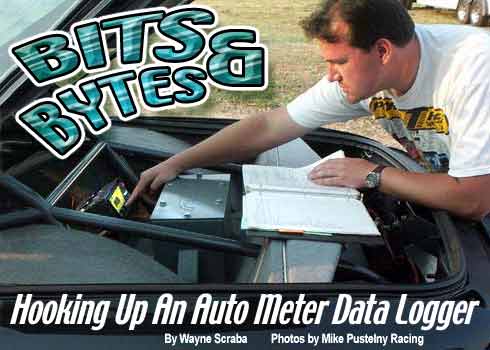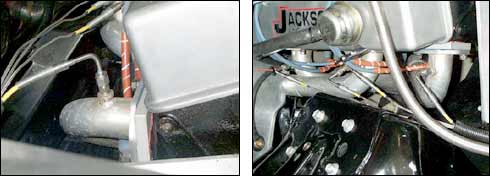|

 or
many of us, it's tough to figure out a video
or DVD player, let alone a sophisticated on-board
computer (a.k.a. data loggers, data acquisition
devices, black box and so on). Basically, bits
and bytes don't seem to add up for some people.
But more and more racers are using data loggers,
and they're definitely reaping the rewards of
having access to reliable on-track information.
One of the biggest obstacles in having a data
logger of some sort is actually hooking the
thing up. You simply can't plug one into a cigarette
lighter, toss it in the back seat and go racing.
There's more to it than that. or
many of us, it's tough to figure out a video
or DVD player, let alone a sophisticated on-board
computer (a.k.a. data loggers, data acquisition
devices, black box and so on). Basically, bits
and bytes don't seem to add up for some people.
But more and more racers are using data loggers,
and they're definitely reaping the rewards of
having access to reliable on-track information.
One of the biggest obstacles in having a data
logger of some sort is actually hooking the
thing up. You simply can't plug one into a cigarette
lighter, toss it in the back seat and go racing.
There's more to it than that.
So how do you hook one up? It's a question
we asked Auto Meter: You see, Auto Meter has
this neat computer called (appropriately) the
"Data Logger", and its gaining widespread acceptance
among the drag racing fraternity. They're being
used in everything from the pro ranks on down
to the slowest of the slow sportsman cars (and
yes, we have it on good word that they've even
installed them on serious street machines).
What Hardware Do You Need?
There are a number of different ways to configure
a data gathering system. In the case of Auto
Meter's Data Logger, a typical "sportsman" category
installation will include the following equipment:
- Data Logger 17 Channel Racing Computer
- Data Fact Pro 32-bit Software
- Drive Shaft RPM Sensor Collar & Magnet (Can
sub 9318 or 9323)
- Accelerometer
- Computer Download Cable Kit

There are a number of
different sensors that require installation
before the system is operative. One option that
many racers include is a complete set of EGT
(Exhaust Gas Temperature) probes. Auto Meter
points out that when these probes are mounted
(obviously in the primary header tubes), they
should all be an equal distance from the port,
and must be mounted prior to the first bend
in the header. Typically, a distance of one
to two inches from the port exit is the correct
location. EGT probes are supplied in two formats:
Straight or with a 90-degree bend. The straight
versions can be individually bent by the installer.
To accomplish this, a dedicated 3/16-inch tubing
bender is used (typically, an Imperial Eastman
bender). The EGT probes are in turn wired to
a series of thermocouples. The wires from the
EGT probes are shortened by the installer, then
assembled into the thermocouple harness.

|